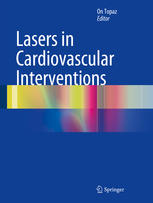

Most ebook files are in PDF format, so you can easily read them using various software such as Foxit Reader or directly on the Google Chrome browser.
Some ebook files are released by publishers in other formats such as .awz, .mobi, .epub, .fb2, etc. You may need to install specific software to read these formats on mobile/PC, such as Calibre.
Please read the tutorial at this link: https://ebookbell.com/faq
We offer FREE conversion to the popular formats you request; however, this may take some time. Therefore, right after payment, please email us, and we will try to provide the service as quickly as possible.
For some exceptional file formats or broken links (if any), please refrain from opening any disputes. Instead, email us first, and we will try to assist within a maximum of 6 hours.
EbookBell Team

4.3
18 reviewsSince the introduction of laser devices to the medical sciences this technology has created great interest. Specifically, the laser’s unique physical properties and precise bio-tissue interactions render this versatile source of biologic energy an attractive tool for multiple therapeutic purposes in cardiovascular medicine. Over the course of the last 2 decades the utilization of laser technology has become an important component for the management of patients with complex cardiovascular diseases. During this time period, cutting edge laser technology including a variety of wave length generators, newly designed catheters, and a selection of advanced optic fibers have been introduced and applied in the cardiovascular circulation. Improved lasing techniques in the cardiac catheterization suites and operation rooms have been implemented for treatment of ischemic coronary syndromes, peripheral arterial occlusive disease and other atherosclerotic thrombotic conditions. Moreover, during this 20 year time frame, several multicenter and single center clinical studies have been published focusing on the role and utilization of lasers in coronary and peripheral revascularization. And within the rapidly expanding field of interventional cardiac electrophysiology, laser technology has recently revolutionized the management of fractured, abandoned and malfunctioning leads of cardiac pacemakers and automatic defibrillators. Consequently, replacing a notoriously cumbersome and high risk open heart surgery with safe and markedly efficient percutaneous laser based extraction. This textbook will provide the most authoritative, comprehensive and contemporary information covering technological progress, clinical experience and pertinent aspects of laser applications in cardiovascular medicine. It will be of interest to cardiologists, vascular surgeons and interventional radiologist as well as medical students, scientists, biomedical engineering students and graduates.